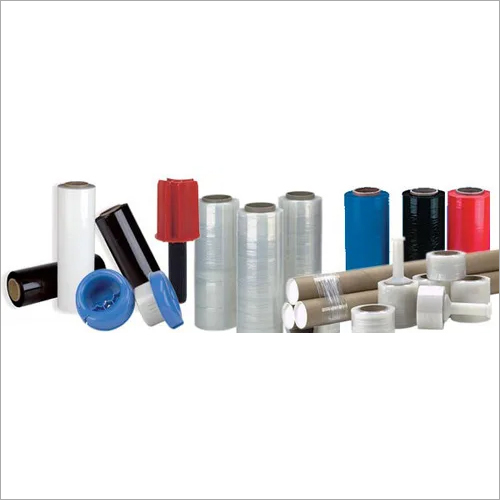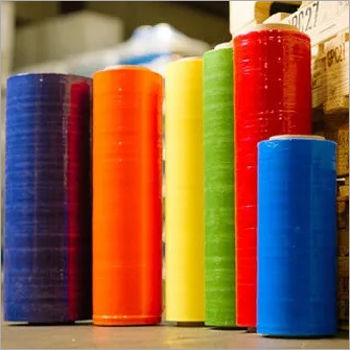Packaging Wrap Film
100 INR/Kilograms
Product Details:
- Product Type Packaging Film
- Processing Blow Molding
- Transparency Transparent
- Hardness Rigid
- Lamination Single-Layer
- Customized Customized Sizes Design
- Click to View more
X
Packaging Wrap Film Price And Quantity
- 500 Kilograms
- 100 INR/Kilograms
Packaging Wrap Film Product Specifications
- Packaging Film
- Rigid
- Transparent
- Customized Sizes Design
- Blow Molding
- Single-Layer
Packaging Wrap Film Trade Information
- 500 Kilograms Per Day
- 05 Days
- North India
Product Description
This collection of colorful and white Packaging Wrap Films has extensive applications in different packing units. Notable for their translucent appearance, these possess excellent moisture and dust resistance properties. Offered in roll form, these have excellent tear and puncture resistant properties. Quality of these packaging materials has been verified on the basis of moisture vapor transmission rate and fog resistant attributes. Light in weight, these packing materials are free from toxic materials. Free from unpleasant smell, these products help to maintain necessary hygiene of stored space where packed items have been placed. Simple application method, recyclable quality, good stretching characteristics and air proof design are their key features. As a reliable manufacturer and supplier of Packaging Wrapping Films, we have carved a niche in the market.
Packaging Wrap Films Features:
1. Stretchability: Packaging wrap film is highly stretchable, allowing it to be elongated and wrapped tightly around products or pallets. The stretching capability enables it to conform to various shapes and sizes, providing a snug fit and enhanced stability.
2. Elasticity: The film possesses good elasticity, which means it can recover its original shape and size after being stretched. This elasticity helps maintain the tension and tightness of the wrap, preventing it from becoming loose or unraveling during transit.
3. Strength and Tear Resistance: Packaging wrap film is designed to be strong and durable. It offers excellent tear resistance, protecting the wrapped items from punctures, abrasions, and damage caused by external factors such as rough handling or shifting during transportation.
4. Cling and Self-Adhesive Properties: The film typically has a cling or self-adhesive characteristic, meaning it sticks to itself when wrapped around an object. This adhesion creates a secure bond between layers, preventing slippage or shifting of items within the wrap. It eliminates the need for additional adhesives, tapes, or heat sealing.
5. Transparency: Packaging wrap film is often transparent or semi-transparent, allowing for easy identification and visual inspection of the wrapped items without the need for unwrapping. This feature is particularly useful in warehouses, distribution centers, and customs inspections.
6. UV Resistance: Some packaging wrap films are formulated with UV inhibitors to protect the wrapped products from the harmful effects of sunlight and UV radiation. This feature is especially important when storing or shipping goods outdoors or in environments exposed to direct sunlight.
7. Cost-Effective: Packaging wrap film is relatively inexpensive compared to other packaging materials, making it a cost-effective solution for securing and protecting goods. It reduces the need for additional packaging materials and can be easily applied by hand or with automated stretch wrapping machines.
8. Environmental Considerations: There are environmentally friendly options available in the form of biodegradable or recyclable stretch films. These films are designed to reduce environmental impact and promote sustainability by degrading naturally or being easily recyclable.
9. Various Sizes and Thicknesses: Packaging wrap film comes in a range of sizes and thicknesses to accommodate different packaging needs. Thicker films provide higher puncture resistance and load stability, while thinner films are suitable for lighter or less demanding applications.
Frequently Asked Questions:
Q: What is packaging wrap film?
A: Packaging wrap film, also known as stretch film or stretch wrap, is a flexible plastic material used to secure and protect products during storage, transportation, and shipping. It is commonly used to wrap pallets, boxes, and other items, providing stability, protection, and containment.
Q: How is packaging wrap film applied?
A: Packaging wrap film can be applied manually by hand or with the help of automated stretch wrapping machines. When applying it by hand, the film is stretched and wrapped around the items in a spiral or crisscross pattern to create a secure and tight wrap. Stretch wrapping machines automate this process, providing consistent tension and efficiency.
Q: What are the benefits of using packaging wrap film?
A: Packaging wrap film offers several benefits, including:
- Securing and stabilizing loads, preventing shifting or movement during transportation.
- Protecting items from dust, dirt, moisture, and damage.
- Enhancing load integrity and reducing the risk of product tampering.
- Improving warehouse and inventory management by keeping items organized.
- Facilitating easy identification and inspection of goods due to the film's transparency.
- Cost-effectiveness compared to other packaging methods.
- Minimizing the need for additional packaging materials like tapes or straps.
Q: Is packaging wrap film recyclable?
A: Some packaging wrap films are recyclable, depending on their specific composition. However, it's essential to check the recycling guidelines in your local area. Additionally, there are biodegradable stretch films available that are designed to break down naturally, reducing environmental impact.
Q: Can packaging wrap film be used with different types of products?
A: Yes, packaging wrap film is versatile and can be used with various types of products. It can wrap items of different shapes, sizes, and weights. From individual boxes to entire pallet loads, packaging wrap film provides flexibility and adaptability for a wide range of packaging needs.
Q: Are there different types of packaging wrap films?
A: Yes, there are different types of packaging wrap films available to suit specific applications. Some common types include cast stretch film, blown stretch film, pre-stretched film, machine wrap film, hand wrap film, colored film for coding or identification purposes, and specialty films with unique properties such as high puncture resistance or extended cling.
Q: What considerations should I keep in mind when choosing packaging wrap film?
A: When selecting packaging wrap film, consider factors such as the size and weight of your products, the required level of protection, the method of application (manual or automated), the desired stretch and cling properties, and any specific environmental or recycling requirements.
Enter Buying Requirement Details





